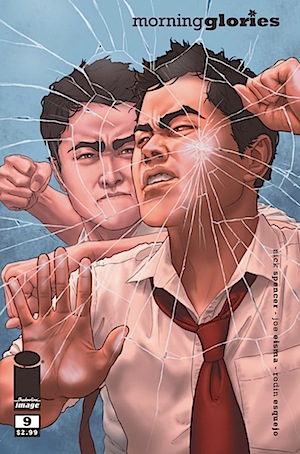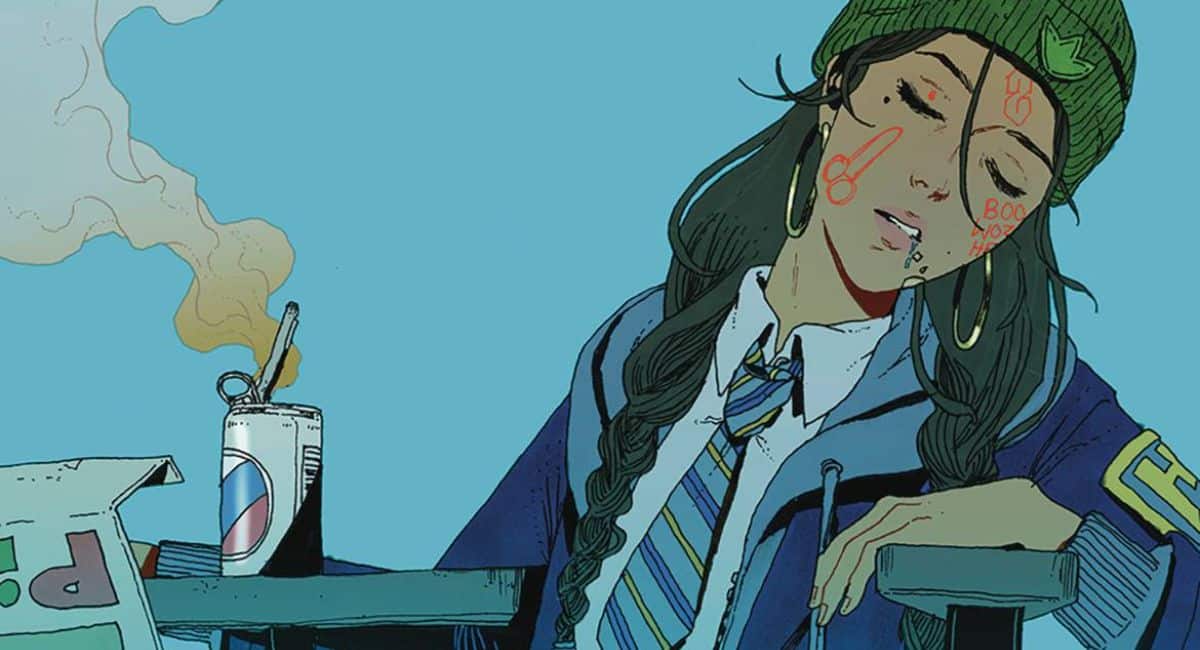[As part of expanding our coverage on the business end of things, we reached out to one of our retail correspondents on the Image second printing matter, who responded with this.]
What a difference a day makes, and more importantly it seems that at least one publisher has decided to listen to the people who put their product directly into people’s hands on a daily basis. Just a day after the abrasive tone to retailers saying that there would be no more second printings, Image has rescinded their position, albeit slightly.
We love Image Comics, don’t get us wrong. They have done some INCREDIBLE things for retailers recently. One of our favorites is that for some titles, if you order a specific amount they will allow all the copies to be made returnable. That way we can order a healthy amount of a new series without feeling we are being overly committed. It allows us to keep a nice amount on the shelf and give it as much exposure as possible. We don’t know how well this strategy has worked for Image but we hope it has been profitable.
What a lot of people, and mainly publishers, forget is that retailers have to play the role of a fortune teller every month. When a new book comes out we have to, essentially, guess how popular it’s going to be. Sometimes we get it right, sometimes it goes horribly wrong. It’s part of the business. But punishing a retailer (and ultimately the consumer) by not offering a second printing for key titles when that initial run has sold out is ridiculous. It’s not our job to get the printing numbers right, it’s the publisher’s.
We, and many other retailers, use a point of sales system that tracks our sale trends. It’s a life saver to say the least (and if you are a retailer that doesn’t use one, we highly suggest rethinking that strategy). We will use those sales numbers as a basis when ordering following issues. Usually this works pretty well. But, say a book starts to gain in popularity; you’re hand selling it like crazy, the trade is a huge hit and people want to catch up, etc. These will all lead to new readers. We try to account for that sort of thing but we can only do so much.
For most books we won’t order a ton of extra copies in the hopes that they’ll eventually sell. We do what we can based on our data and ultimately if we over order, we’re the ones who pay the price. Image is a business too, we get that, but not allowing second printings for certain books will not lead to a heavy increase in initial orders, we guarantee it. It’s ultimately a lose-lose. If you feel like a particular issue is going to be huge and you think we should order more then get on the phone or send us an e-mail, we’ll listen. We will take all the help we can get when it comes to ordering.

BTW, just to round things out, Here’s Image creator Nick Spencer’s explanation of why second printings are an expensive proposition from a creator’s viewpoint:
What’s getting lost here is the good news– this past year, we’ve seen the needle move significantly in terms of the sales of creator-owned books. There is a positive, fast-moving trend-line here, and it says if you produce quality, original work, you can find a home in the current marketplace. That’s something we should all be celebrating right now, and something I’m very thankful to our retail community for.
Now, that said, I worry this conversation is devolving into finger-pointing: “You’re not ordering enough,” versus “You’re not printing enough.” And both sides have cases to make. However, I’d point out that some folks aren’t quite grasping how the Image model works. The publisher isn’t the one taking the risk when it overprints– the creators are (at least for the most part). We get paid based on sales, after costs. More printing equals more costs. Significant costs. So upping print runs can mean working for free for years instead of months, and in some cases, not getting paid at all. That’s just not going to be feasible for most creators.
So let’s be sure to be fair about who’s being asked to do what in this instance. And it gets more complicated than that. You’re asking the creator to overprint, but they have no control over the sales, end of the day. For instance, Creator A says, my trade is coming out, but orders are down on the single issue that comes out a week later. Should they overprint? We all do, by 10-20 percent, but more? Well, you’re making not one but two leaps of faith there– one is that you’re right about the consumer demand. Fine, we believe in the work, go for it. But the second is that x number of retailers will go back and re-order when their shelf copies run out. This is by no means a given. Plenty will just take the sell-through and move on. That’s a very scary risk, and remember, you’re taking it 1000 or so times, because you’re not assuming it for one retailer, you’re assuming it for all of them.
And that’s maybe the most important part, which is the risk mitigation. For a retailer, let’s say there are two dozen, maybe three dozen creator-owned single issue books you might be under-ordering on by a handful of copies– the shelf copies are gone, a couple people have asked about it, etc. Now, don’t get me wrong, I know that’s a very real, dollar amount risk, upping the numbers there. But it’s also done within the context of a broader inventory that you’ve designed by nature to absorb some risk– no one gets their orders right all the time, obviously. It’s done with additional options in reserve to at least recoup some potential loss– discounts, dollar bins, buy two get one free deals, etc.For the creator, however– this one book might very well be all they have. There is no broader base to absorb the loss if one is incurred. There’s no backup plan, and again, you’re doing it in huge, huge numbers. It’s the difference between playing a couple chips and going all in.
Which is, again, not to minimize the difficult spot the retailer is in. I mean, that’s what this all really comes down to– I’ve worked with too many great retailers to think any numbers drop on a book comes from malice, laziness, or ineptitude. It comes from everyone involved having very tough decisions to make with their very limited resources. I’m just trying to explain, from my perspective, why 50 percent overprints are not happening. The risk simply can’t be taken or absorbed by the creators– the books, and this model even, would simply cease to exist, end of story. That much I am absolutely certain of.
But there’s a second part to this that I suspect is far, far more important. I have always approached creator-owned work with the primary goal being to create something that’s lasting, and sustainable, for years. That means lots of things: no fill-in, inconsistent art. The story is the number of pages it needs to be. Double-sized first issues at standard cover, with 99 cent reprints and free digital samplers. $9.99 first trades with a lot of pages. These things are big-time loss leaders. We do them because the goal is not to grab cash, slump, cancel, and relaunch/do something else. We’re playing a long game, and try to do things that help retailers build a consistent, long-lasting product for their shelves.
The simple reality, though, is the market is not really built around books that take this approach. All the focus is put on first issues, first arcs– big, quick returns. Most comics are published with this mind, but many Image books aren’t. And when you apply the ordering patterns of a “sprinter” book to a “marathon” book, well– it doesn’t usually serve you well on the latter. Cutting orders after a skip month sends a message that it would be better to do a fill-in; but we all know that, long-run, those fill-ins will stand out and detract from the overall book and the collections, having negative sales impacts long term. Not upping (or even cutting) orders after a trade release means the book is on a dangerous path to becoming a collection-only purchase, rather than using the trade to move readers over to singles.
The bottom line is the ordering pattern, the marketing approach, the pricing, the schedule– it really does differ depending on what your goals are in terms of the lifespan of the work. And this something that we all– retailers, publishers, and creators need to talk about, because it cuts to the core of what we’re making and selling. Are we pushing out disposable, flash in the pan impulse buys, or are we trying to build stories that can last for years? My sincere hope is that we continue to see more of the latter, but making that happen will require new ideas and new solutions so that we’re in all the best position possible to serve our customers and our readers.








RT @Comixace: Image and retailers: one retailer speaks out: [As part of expanding our coverage on the business end of … http://t.co/X …
RT @Comixace: Image and retailers: one retailer speaks out: [As part of expanding our coverage on the business end of … http://t.co/X …
RT @Comixace: Image and retailers: one retailer speaks out: [As part of expanding our coverage on the business end of … http://t.co/X …
“What a lot of people, and mainly publishers, forget is that retailers have to play the role of a fortune teller every month. When a new book comes out we have to, essentially, guess how popular it’s going to be.”
But that’s NOT what we’re talking about here. SAGA is a PROVEN hit series with a regular audience, and yet retailers weren’t ordering enough of them at the get-go. Why?
Please, stay on point.
I think Nick’s point is very critical and one that has been overlooked quite a bit.
I have seen a lot of retailers make the point that if Image believes in their product, they should believe in it enough to overprint the the numbers they think it will sell. That point of view is likely very accurate for DC, Marvel, and other traditional publishers. But when a creator only gets paid after costs are met, and they have a family to support, the rist of an overprint is very personal very fast. Its not just a matter of affecting margin for investors, and Nicks point that this is the ONE book they might have to eat off of for a month that risk is far higher then one where a retailer would have a diversified portfolio of books being ordered and so ordering 2 or 3 more of a title should not make or break the store.
Also, there is a growing number of us consumers that this whole discussion is moot too. I have never had issues with not being able to find “in stock” titles that I am looking for with digital. When books are not in stock at a store, its the retails that lose that fight not the publisher. Consumers can still buy.
And in the additional material under that, saying you base purchases on POS data, etc… and that it’s still a guessing game doesn’t wash. If you’re doing hand sales, after trade sales, etc… how can you not factor that “floor response” into future orders? When I worked retail there was a constant feedback system in place so the manager knew what was hot at the end of the sales day, and could make the appropriate changes.
This is all some sort of standoff that needs to be broken.
Publishers should not expect retailers to over-order everything.
Retailers should not expect publishers to have everything in stock forever.
If a publisher wants retailers to increase orders above what that retailer’s experience and instincts indicate, then that publisher should offer returnability.
I think Nick makes a very good point. I don’t think many people realize the risk that creators take when putting a book out on Image, I know I didn’t. But those same risks exist with retailers, a point that he also made. With that said, I do want to address a couple of Bill’s points:
Yes, Saga is a proven hit and Image made it very easy to order aggressively with their ability to have all their #1 issues returnable. But, in the end, we as retailers still order based on what we have sold. Sales drop over time and we account for that. We still order based on what we think we can, and will, sell for future issues.
And obviously floor response does factor into our ordering but if an issue is several months old and customers are just getting into it via trades or older issues the probability that those issues will sell out over time is high. It’s not an exact science and we want to do our best to keep all issues in stock for hot books but sometimes it doesn’t always work out. Also, many people only want to get floppies, not trades as well. The ability to fill in issue gaps is always helpful.
I don’t think anyone wants to point fingers in the end, we’re all in this together after all. I just think that Image’s initial message was not presented or explained properly. Nick Spencer did a much better job in laying it all out.
Comments are closed.